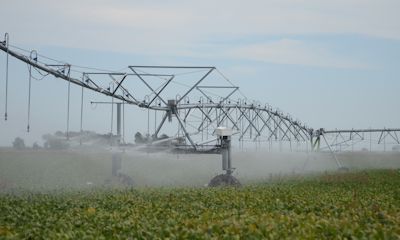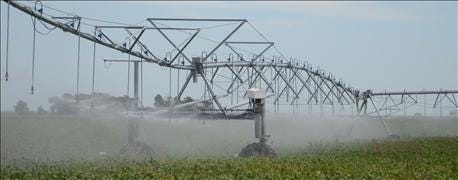
Variable rate irrigation is drawing more attention in recent years as more companies have started offering VRI technology. Growers are looking to irrigate more efficiently for a number of reasons and variable-rate irrigation is one way to irrigate the entire field in a precise way.
But growers and researchers alike still have questions. What's the best way to delineate management zones? Which fields may or may not be best suited to variable rate?
Amir Haghverdi, University of Nebraska assistant professor and Extension water management and irrigation specialist, notes there are several considerations to make before delving into variable-rate irrigation.
1. How are you delineating zones?

GETTING STARTED IN VRI: What's the best way to delineate management zones? Which fields may or may not be best suited to variable rate? Amir Haghverdi UNL assistant professor and Extension water management and irrigation specialist, notes 3 considerations to make before delving into variable-rate irrigation.
When getting started in variable rate, it's important to know the variability in the field and make sure that variability could be explained by variable rate irrigation. The next step is to determine how different management zones will be delineated – a management zone should be a sub-region of a field that's relatively uniform.
"When we talk about textural variability, we tie it to water-holding capacity," says Haghverdi. "Rolling topography may cause runoff and different infiltration across the field."
Ideally, the best way to delineate zones is to have high resolution maps of soil water-holding capacity. However, it's hard to collect enough deep soil samples to adequately cover the entire field. "That's why I think a grower should explore the possibility of using more easily-collected data, such as soil ECa [apparent electrical conductivity] data or yield maps for zone delineation," Haghverdi says.

"However, I'd only recommend using them when they are highly correlated to soil hydraulic properties. I'd also recommend evaluating the data based on your knowledge of the field – don't just use the data without pre-processing and without knowledge about the soil and field," he adds. "Those proxies are useful, but they can carry error and be misleading. Taking a few samples from each management zone is a safe guard to verify our understandings of soil variability at field-level and also to make sure data is adequate for zone delineation."
2. How many zones do you need?
There are several different kinds of variable rate systems for center pivot irrigation – sector control, zone control, and individual nozzle control, which give more freedom to control zones.
~~~PAGE_BREAK_HERE~~~
However, Haghverdi notes when it comes to delineating management zones, more isn't always better. "As you add more management zones, you are making the story more complicated because you need to make more decisions," he says. "Ideally when we irrigate, we need to know how much to put on each zone and when we have a lot of zones we have to do that for more. Fewer zones are easier to manage."
As part of his PhD research at the University of Tennessee, Haghverdi conducted a study in western Tennessee to evaluate the potential yield improvement and water conservation by three irrigation scenarios during which he found that for the field of study, beyond three or four zones, not much variability could be explained.

"You need to have a reason to have more zones," he says. "Growers need to make sure they select the optimum number of zones for their fields to address soil variability."
3. Is there a benefit?
Before delving into VRI, it's important to consider whether or not there's a payoff. "If we want to practice VRI, we need a rough estimate for yield versus applied water for each field and across different soil types," Haghverdi says.
There may be no need to use VRI – it might be best to simply identify the optimal uniform irrigation rate to meet the needs of the field. In addition, growers need to keep the management cost in their mind on top of capital investment to install or upgrade to a variable rate irrigation system.
One of the reasons many growers adopt variable rate, especially where water isn't limited, is to improve yield while avoiding wet spots and reducing leaching. Where allocations are in place and rainfall is limited, it might be used to make the most of the resources available – although this makes the economic analysis more complex.
Haghverdi recommends using yield maps to do a simple analysis – cost of seed, fertilizer, and other inputs relative to yield to determine whether the variation is significant enough to try variable rate.
However, there are unquantifiable benefits, like mitigating runoff. "Sometimes we have runoff issues if we don't manage the irrigation well when we have rolling topography and that can cause environmental problems," he says. "Some things are hard to put a dollar amount on, but are important."
Related: Read about Haghverdi's research on VRI at the Nebraska Panhandle Research and Extension Center
For more information, contact Haghverdi at [email protected].
About the Author(s)
You May Also Like






